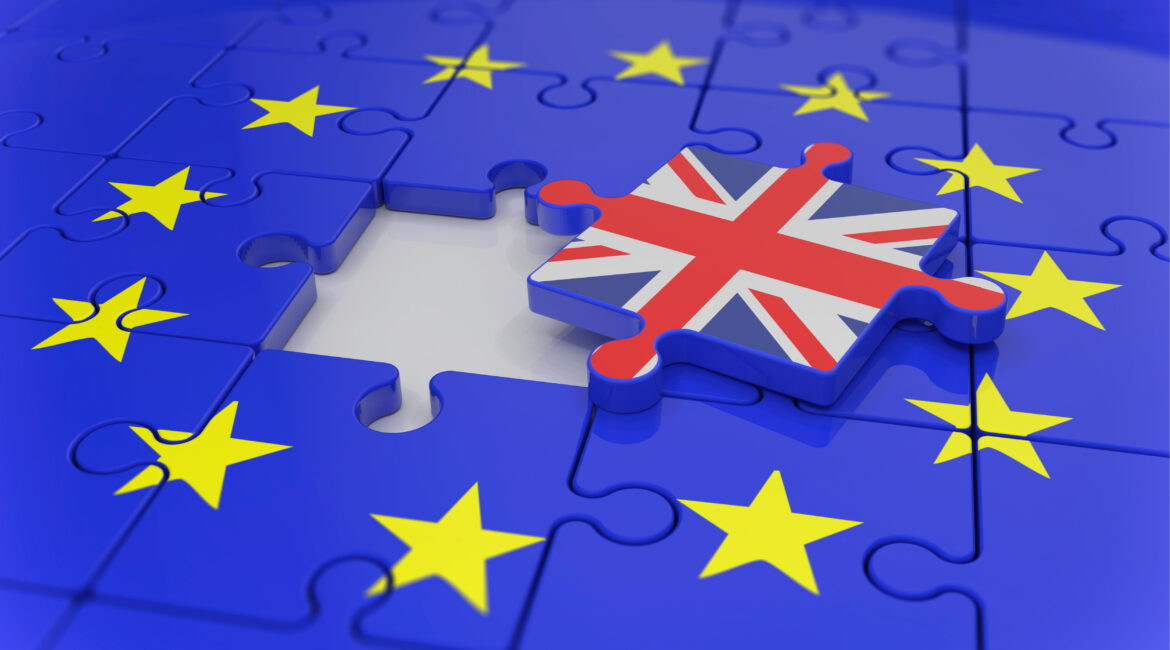The withdrawal of the United Kingdom from the European Union raises a number of questions regarding the impact on existing and future intellectual property rights.
The end of the Brexit transition period set out in the Agreement on the Withdrawal of the United Kingdom of Great Britain and Northern Ireland from the European Union will expire on 31 December 2020. It is therefore advisable to start preparing for the implications on patent, trade mark and design law. We shall summarize for you in this post the most important aspects that you need to consider:
The European Patent Convention (EPC) is not an agreement of the European Union, but an international treaty in which, for example, Switzerland, Norway and Turkey are also members. The European Patent Convention will therefore not be affected by Brexit. European patents (with British designations) will still be granted by the European Patent Office and will be effective in the United Kingdom.
Patents
The European Unitary Patent proposed for the European Union in the future will not be valid in the UK as the country has withdrawn its ratification of the proposal.
Trade marks
Registered EU trade marks
Although all EU trade marks already registered will lose their validity in the United Kingdom on 31 December 2020, the Withdrawal Agreement provides for the automatic continuation of trade mark protection of registered EU trade marks as national trade marks in the United Kingdom. There will be no need to submit a new application. The holder of a registered EU trade mark will automatically obtain trade mark protection in the United Kingdom for the identical trade mark and identical goods and services without re-examination and without paying application fees again, while maintaining the priority of the current EU trade mark or its seniority.
The UKIPO will not issue new or replacement certificates of registration, but the data can be viewed on the trade mark register. During the first three years after the end of the transitional period, i.e. until 31 December 2023, the trade mark holder will not have to provide an address for service in the UK. The assigned registration number will consist of the last 8 digits of the EU trade mark preceded by the number UK009. For example: The EU trade mark with the registration number 018765432 will become UK00918765432
The first renewal of the national trade mark in the United Kingdom is due at the same time as the renewal date of the corresponding EU trade mark. EU trade marks which have already expired on December 31, 2020, for which the 6-month grace period for renewal does not end until 2021, can be renewed by paying the renewal fee and the late fee to the EUIPO with the result that the renewal will also apply to the new UK national trade mark.
Early (before December 31, 2021) renewal of an EU trade mark at the European Intellectual Property Office (EUIPO), the protection of which expires in the first half of 2021, is not considered to apply to the UK national trade mark. So if you renew your EU trade mark between July 1, 2020 and December 31, 2020, but the actual expiration date is after December 31, 2020, the early payment will only renew the EU trade mark, but will not affect the corresponding new UK trade mark The “new” UK trade mark must be renewed separately to enjoy protection in the UK for a further 10 years.
If the holders of the EU trade mark have no interest in continuing trade mark protection in the United Kingdom, they can opt out of protection as a national trade mark from January 1, 2021 (“opt out”). A request needs to be filed and the forms will be made available by the UK IP Office from January 1, 2021.
Pending EU trade mark applications
For a pending EU trade mark application, i.e. an EU trade mark that is not registered until after 31 December 2020, the same trade mark can be filed for registration in the United Kingdom for identical goods and services within 9 months, i.e. by 30 September 2021, while maintaining the application date or priority of the EU trade mark. The application is treated as a national application and the usual application fees for national UK trade marks must be paid. This will include trade marks that are currently in opposition proceedings or for which the opposition period has not yet expired.
International trade mark registrations (IR trade marks) with EU designation
For IR trade marks designating the EU, a UK national trade mark corresponding to the IR trade mark will automatically also be registered in the UK register, provided that the IR trade mark has been granted protection in the EU before the end of the transitional period on 31 December 2020. The assigned registration number will consist of the last 8 digits of the IR trade mark preceded by the number UK008. For example: The IR trade mark with the registration number 065432187 will become UK00865432187.
If the IR trade mark has neither been granted nor refused protection in the EU before the end of the transitional period, the proprietor may apply for a national application in the UK, retaining the filing date of the IR trade mark, within 9 months of the end of the transitional period. Alternatively, the proprietor could request a retrospective extension of the IR trade mark to the United Kingdom. This retrospective extension will only be valid from the date of filing the request and has no retroactive effect on the original filing date of the IR trade mark.
Proof of trade mark use
No new 5-year grace period for use of the new British trade marks will be initiated. However, if genuine use must be proved for the new UK trade mark and the relevant period includes a time period prior to 1 January 2021, any use in the whole of the EU up to and including 31 December 2020 will be taken into account.
Industrial Designs
Unregistered Community Designs
With effect from 1 January 2021, the United Kingdom will introduce its own unregistered design based on the model of the unregistered Community design, the so-called “supplementary unregistered design (SUD)”. Unregistered Community Designs disclosed in the EU or the United Kingdom before this date will continue to be protected as a so-called “UK continuing unregistered design (CUD)” until the expiry of the three-year term of protection.
Registered Community Designs
European design applications which are still pending on January 1, 2021, i.e. which have not already been both registered and published, will not be automatically protected as re-registered designs. A transitional period of 9 months applies to these designs, i.e. until September 30, 2021, until which date an identical national design can be applied for while maintaining the original application date. When filing the application, the filing date of the Community design application must be indicated. The national fee system applies and the application will be examined under UK law.
International designs designating the EU
For International Design Registrations under the Hague Agreement (IR design), in which the EU is designated, essentially the same rules apply as for Community Designs. For all IR designs with protection in the EU, a corresponding industrial property right, the so-called re-registered international design, will be created automatically and free of charge in the United Kingdom with effect from January 1, 2021.
For IR designs designating the EU, which are still pending on January 1, 2021, i.e. for which the EUIPO has not yet granted protection, an application for a national design may also be filed until September 30, 2021, while maintaining the original filing date and, where applicable, the priority originally claimed.
Conclusion
There is a need for action for applicants whose trade marks or design applicationss are not yet registered in the EU before January 1, 2021. This is because these applicants must decide by September 30, 2021 whether they wish to apply for a corresponding national property right while maintaining priority in the United Kingdom.
EU trade marks which have already expired on 31 December 2020, for which the 6-month grace period for renewal does not end until 2021, can be renewed by paying the renewal fee and the late surcharge to the EUIPO, with the result that the renewal also applies to the split-off national UK trade mark. This means that costs can be significantly reduced, as no separate renewal is required in the UK.
If you have any questions, please contact us here.
[Design Credit: JMix / Stockfoto / Shutterstock.com]




